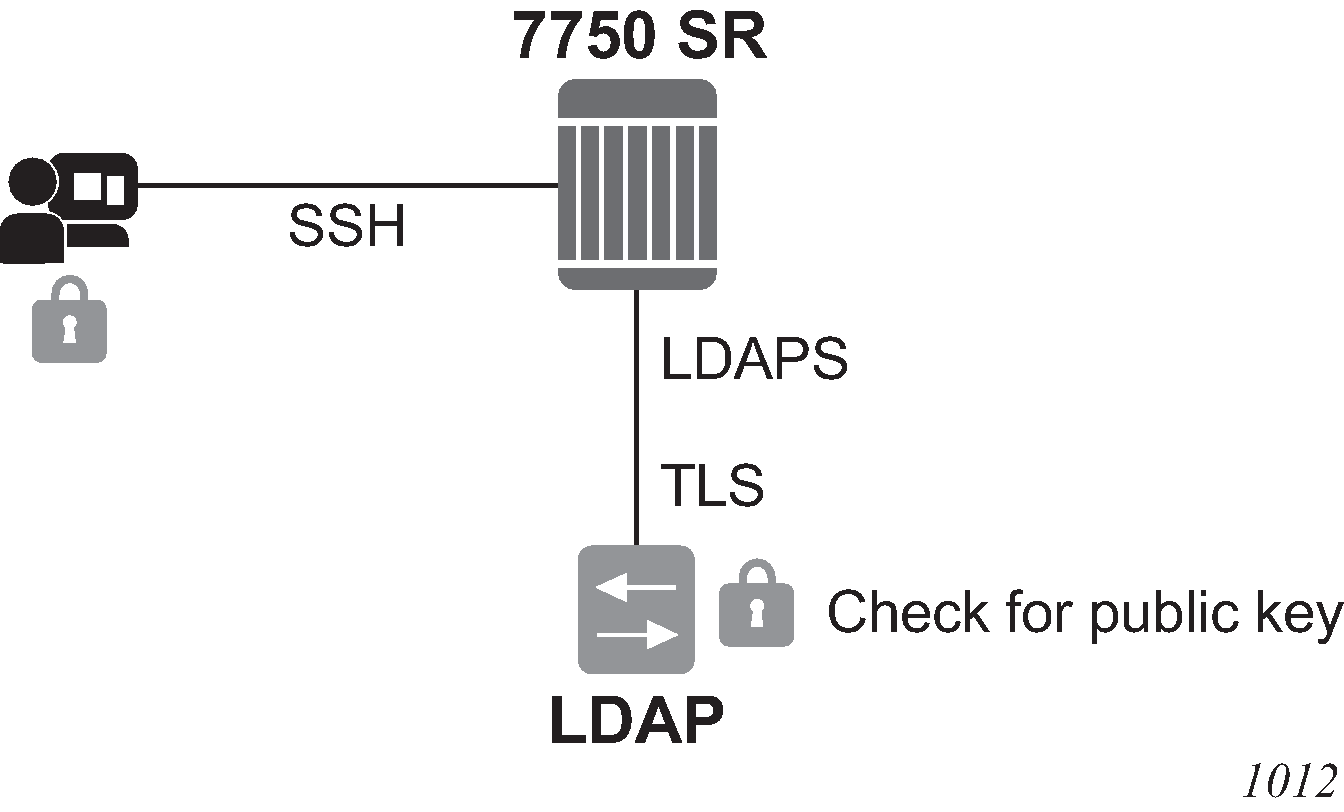Lightweight Directory Access Protocol (LDAP) can provide authentication, authorization, accounting (AAA) functionality, and can allow users to access the full virtualized data center and networking devices. SR OS currently supports LDAP provision of a centralized authentication method with public key management. The authentication method is based on SSH public keys or keyboard authentication (username, password).
Administrators can access networking devices with one private key; public keys are usually saved locally on the SSH server. Proper key management is not feasible with locally-saved public keys on network devices or on virtual machines, as this would result in hundreds of public keys distributed on all devices. LDAPv3 provides a centralized key management system that allows for secure creation and distribution of public keys in the network. Public keys can be remotely saved on the LDAP server, which makes key management much easier, as shown in Figure: Key management.

The administrator starts an SSH session through an SSH client using their private key. The SSH client for the authentication method sends a signature created with the user’s private key to the router. The router authenticates the signature using the user’s public key and gives access to the user. To access the public key, the router looks up the public key stored on the LDAP server and the public key stored locally. The order in which the public keys are looked up is defined by the authentication order. Communication between the router and the LDAP server should be secured with LDAP over SSL/TLS (LDAPS). After opening successfully a secured connection, LDAP returns a set of public keys that can be used by the router to verify the signature.
LDAP is integrated into the SR OS as an AAA protocol alongside existing AAA protocols, such as RADIUS and TACACS+. The AAA framework provides tools and mechanisms (such as method lists, server groups, and generic attribute lists) that enable an abstract and uniform interface to AAA clients, irrespective of the actual protocol used for communication with the AAA server.
The authentication functions are:
Public key authentication
The client tries to SSH to the SR OS using public keys.
Public keys can be stored locally or on the LDAP server and retrieved as needed to authenticate the user.
Password authentication (keyboard interactive)
The LDAP server can be used for user authentication using keyboard interactive, as with simple username and password authentication.